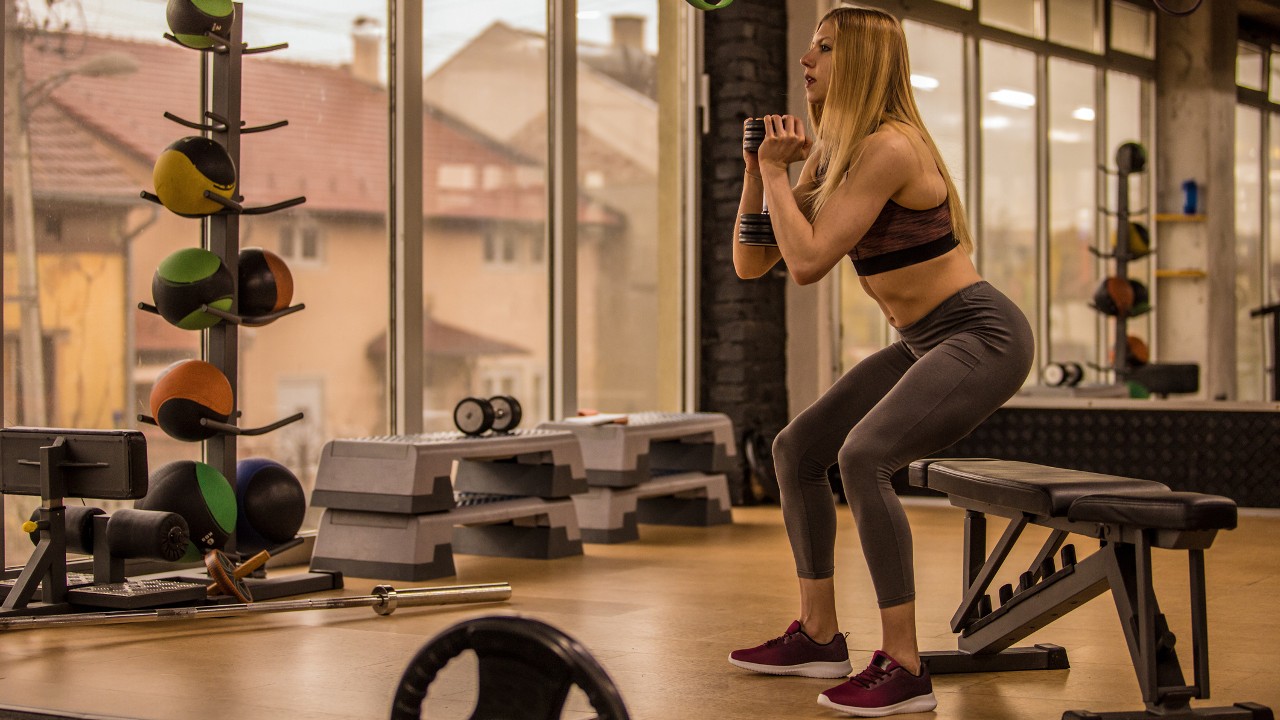How To Do The Box Squat
Ditch the fancy equipment – sometimes all you need is a box

The unweighted squat, or air squat, is a hard move to top when talking about the best bodyweight exercises. It works pretty much every muscle in your lower body to some extent, while also challenging your core.
It’s such a good exercise that the only ways to improve on it would be to progress to single-leg variations like the Bulgarian split squat or to introduce some weight, via the goblet squat or barbell squat. The box squat can be used both as a way to make sure your form is on point before tackling more challenging versions and as a staging post as you get used to each variation.
Box Squat Benefits
By introducing a box or other surface to sit on during the exercise you can ensure that you are sitting deep enough into your squats, which will also improve your form in other types of squats. It’s easy to increase or decrease the challenge of the exercise – a higher box makes it easier, a lower one makes it harder – and the box squat can serve as a stepping stone to the unweighted squat for beginners.
The box squat is a functional exercise that trains all the muscles you use to sit down and get up, with your quads and glutes bearing the brunt of the work. The strength you gain from it will carry over into your everyday life – you’ll notice it every time you get up out of a chair.
How To Do The Box Squat

Get a box. Or a bench. Or a chair. Something you can sit down on. The lower it is the harder the exercise will be. For most, a 40cm-high box will allow you to squat deep enough for your glutes and hamstrings to become parallel with the floor.
With your feet shoulder-width apart and toes pointed slightly outward if comfortable, lower your body until only your glutes rest on the box for 1-2sec. Squeeze the glutes and then return to the start position by driving through the heels and hips. Take extra care to keep your back straight and chest elevated.
If you’re attempting this move using a loaded barbell, rest the bar on your upper traps, not your neck, and keep your elbows high throughout the move. This reduces the risk of injury and ensures better control of the bar
Sign up for workout ideas, training advice, reviews of the latest gear and more.
Box Squat Variations
Reducing the height of the box is a great way to progress this move. A 30cm-high box should take your hamstrings below parallel and add further tension to the targeted leg muscles.
To isolate each leg for more targeted growth and address any imbalances, the one-leg box squat can provide unique benefits.
One-leg box squat

Once you have located your box stand in front of it, facing the opposite direction. Lift one leg off the ground and sit down on your box, then stand up again, keeping that leg raised the entire time. Once you are standing tall again, switch legs and repeat. Try to stay in control on the way down, and ensure you straighten up all the way when standing.
Aim to complete 10 box squats on each leg, have a quick break, then do another 10 on each. Or dedicate a station in your favourite circuit routine to the exercise.

Nick Harris-Fry is a journalist who has been covering health and fitness since 2015. Nick is an avid runner, covering 70-110km a week, which gives him ample opportunity to test a wide range of running shoes and running gear. He is also the chief tester for fitness trackers and running watches, treadmills and exercise bikes, and workout headphones.
